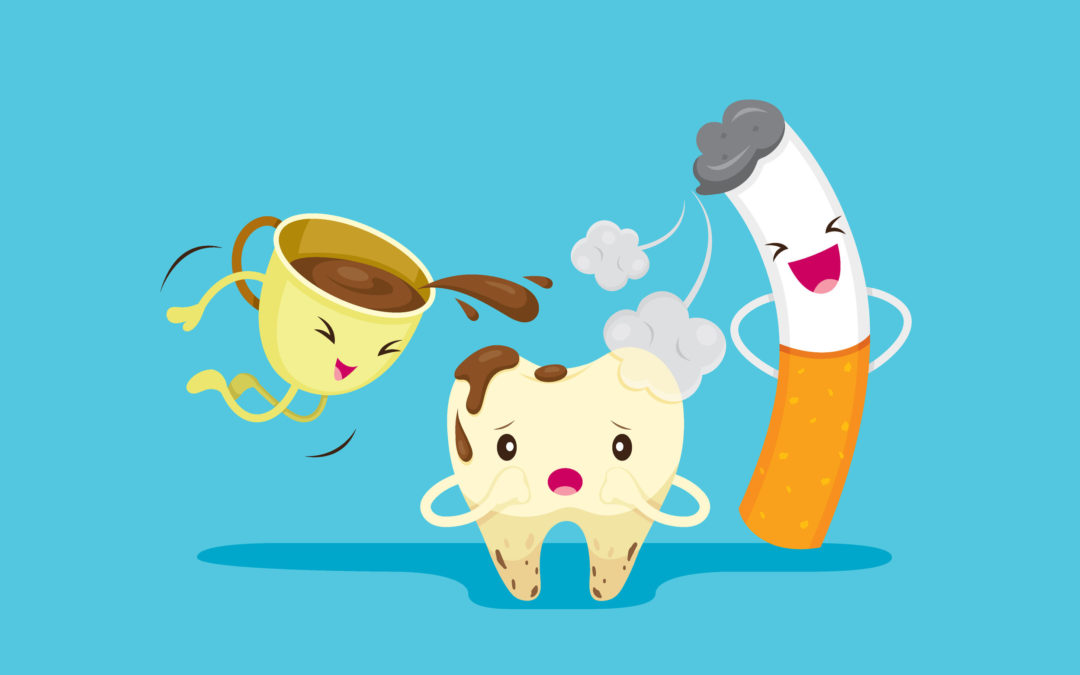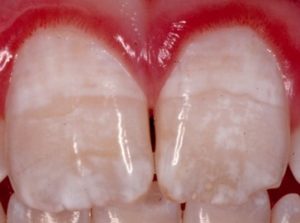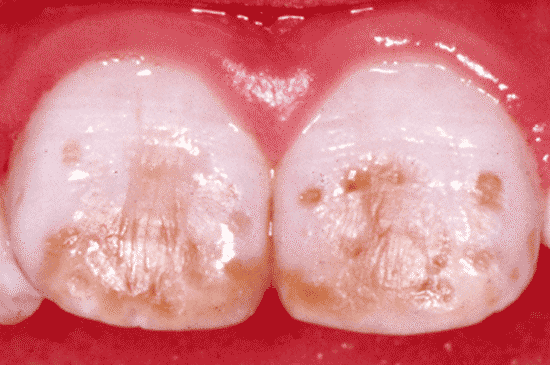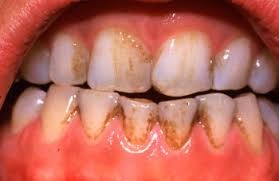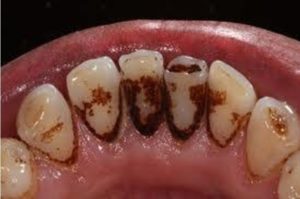There are many reasons teeth can become stained or appear discoloured. Some reasons are unavoidable; however some can be prevented.
There are generally two types of tooth discolouration.
‘Intrinsic’ meaning inside the tooth
‘Extrinsic’ meaning outside the tooth
Types of intrinsic staining
This usually occurs whilst the tooth was developing or if the tooth/teeth have suffered trauma. The change comes from within the tooth thus making it more difficult to correct
Grey /blue-ish hue: this can occur if the tooth has been knocked and the nerve inside the tooth has been damaged. This can be treated however it requires a special type of whitening from inside the tooth after root canal therapy. The results can be unpredictable.
Mottled appearance: teeth may have white or dark flecks, spots, markings or even pitting on their surface. This can be from a variety of reasons during development, all of which effect the formation of the enamel, making these markings challenging to remove. More complex treatment such as the use of tooth coloured materials to mask the surface can help cover or camouflage the appearance.
Grey banding: will appear as grey linear markings across most of the teeth. This is caused from a certain type of antibiotic (tetracycline) that was used either while your mother was pregnant or when you were younger than 8 years old. This type of antibiotic is not used for pregnant women or younger children these days due to this effect. This condition is difficult to treat and requires complex treatment using veneers to cover the teeth.
Yellowing: this can occur with age or with acid wear. As the enamel surface gets thinner the dentine (underlying structure which is yellower in colour) can shine through more making the teeth appear a darker shade. If there is a considerable amount of enamel wear then restorations to cover the weakened area and to protect from further wear may be indicated.
Types of Extrinsic staining
Extrinsic staining is on the surface of the tooth, it is more of a superficial stain that can often be removed (with the correct process).
Yellow/brown stains: this can be caused by smoking, tea, coffee and pigmented foods like curry.
Brown/black stains: this can be caused by tea, coffee and red wine. It can also can occur with certain types of mouthwashes
Black staining: some people have a certain type of bacteria in their mouth that can cause this staining (usually more evident on younger children and around the gum line). Black staining can also be caused by certain types of supplements such as iron (if taking it as a liquid or chewing a tablet).
Treatment for extrinsic staining
To help prevent these extrinsic stains you could eliminate or reduce certain food and drinks in your diet. Let’s face it, not many people are willing to give up their morning coffee or a glass of red wine with dinner. So the next best thing would be to maintain good oral hygiene (brushing and cleaning in between the teeth daily) and also rinsing the mouth out with tap water after consuming these food and drinks. Often these extrinsic stains can be removed by the Oral Health Department here at Hartwell Dentistry.
If you have any staining that you notice on your teeth, please give us a call at Hartwell Dentistry so that we can advise you as to how best to improve the appearance of your teeth, whether it be via thorough cleaning, whitening or more complex treatment.

